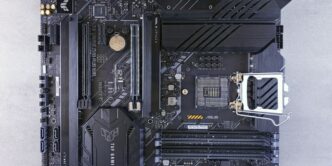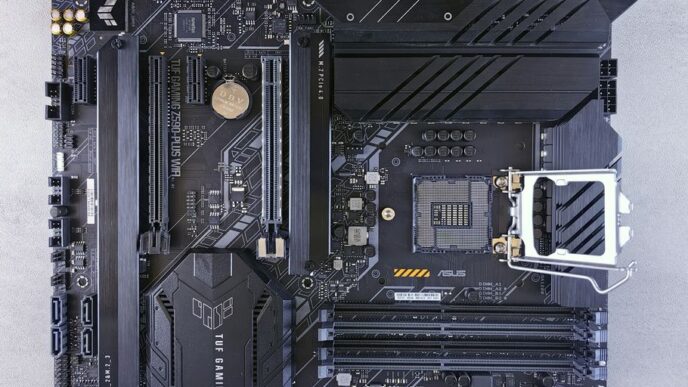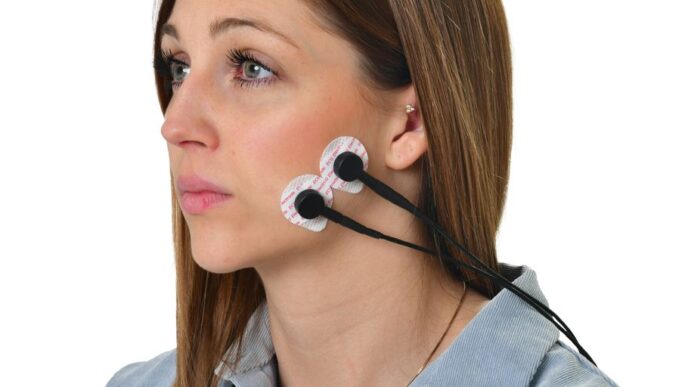Handheld portable games have really taken off lately. It used to be just Game Boys, but now there are tons of devices that let you play games anywhere. New machines come out all the time, so it can be hard to figure out what’s actually worth buying. You probably know the Nintendo Switch is good, but depending on what you like, the right handheld could be a cheap emulator or a pricey portable PC. We’ve spent a lot of time looking into the best handheld portable games and devices to help you pick.
Key Takeaways
- The handheld gaming market is huge and has lots of different options.
- Think about what games you want to play before buying a handheld.
- Portable gaming PCs are a big deal now, offering powerful gaming on the go.
- There are great handhelds out there for people who love classic games and emulation.
- Expect more cool stuff in handheld portable games in the future, like better tech and new systems.
The Current Landscape of Handheld Portable Games
Understanding the Diverse Handheld Market
The handheld gaming market in 2025 is a wild mix of devices, each trying to carve out its own niche. It’s not just about Nintendo anymore; we’re seeing a ton of innovation from different companies. You’ve got your dedicated consoles, your handheld gaming PCs, and even souped-up emulators. The key is understanding what each type of device brings to the table. It’s a far cry from the days of simple portable gaming. The market is segmented by price, performance, and the types of games each device can play. For example, some handhelds focus on streaming games, while others are built for raw power and playing PC titles on the go. It can be overwhelming, but that’s why we’re here to break it down.
Key Players in Portable Gaming
Okay, so who’s actually making waves in the handheld space? Nintendo is still a major player, of course. But companies like Valve (with the Steam Deck) and ASUS (with the ROG Ally) are shaking things up with their handheld gaming PCs. Then you’ve got smaller companies focusing on retro gaming handhelds and emulation devices. Here’s a quick look at some of the key players:
- Nintendo: Still dominating with their exclusive titles and user-friendly experience.
- Valve: Pushing the boundaries of portable PC gaming with the Steam Deck.
- ASUS: Offering high-performance handheld PCs like the ROG Ally.
- AYANEO: Known for premium handheld gaming PCs with unique designs.
- Analogue: Specializing in high-end retro gaming handhelds.
It’s a competitive market, and each company is trying to offer something unique to attract gamers. It’s interesting to see how the gaming console market is evolving.
The Rise of Handheld Gaming PCs
One of the biggest trends in portable gaming is the rise of handheld gaming PCs. These devices are basically mini-PCs that you can take anywhere, and they’re way more powerful than traditional handheld consoles. They can run a huge range of PC games, from AAA titles to indie gems. The Steam Deck really kicked things off, and now we’re seeing more and more companies jumping on board. The advantage of these devices is their versatility. You’re not limited to a specific ecosystem of games; you can play pretty much anything that runs on Windows or Linux. Of course, they tend to be more expensive and require a bit more technical know-how to set up and optimize, but for many gamers, the power and flexibility are worth it. The rise of these devices has changed the landscape of portable consoles for good.
Choosing the Right Handheld Portable Game Device
So, you’re ready to jump into the world of handheld gaming? Awesome! But with so many options out there, picking the right one can feel overwhelming. Don’t worry, we’ll break it down. It’s all about figuring out what you want and need from a portable gaming device. Let’s get started.
Defining Your Gaming Needs and Preferences
First things first: what kind of games do you actually want to play? Are you dreaming of the latest AAA titles with all the graphical bells and whistles? Or are you more interested in indie games, retro classics, or Nintendo exclusives? Your gaming preferences will heavily influence your choice.
Think about where you’ll be playing, too. Will you be mostly at home, near a power outlet? Or do you need something with amazing battery life for long commutes or travel? Answering these questions will help you narrow down your options considerably. For example, if you’re a die-hard Nintendo fan, waiting for the Switch 2 might be a no-brainer.
Budgeting for Your Portable Gaming Experience
Let’s talk money. Handhelds can range from surprisingly affordable to seriously expensive. Before you fall in love with a particular device, set a realistic budget. It’s easy to get carried away, but knowing your price limit will help you avoid disappointment later.
Here’s a rough idea of what you can expect:
- Budget-friendly: Under $300 – Think older models, Android-based devices, or dedicated retro handhelds.
- Mid-range: $300-$600 – This is where you’ll find the Nintendo Switch and some of the more affordable handheld gaming PCs.
- High-end: $600+ – Expect top-of-the-line handheld gaming PCs with powerful processors and dedicated graphics cards.
Considering Game Compatibility and Ecosystems
Okay, so you know what you want to play and how much you’re willing to spend. Now, let’s think about game compatibility and ecosystems. This is where things can get a little complicated, but it’s important to understand the differences.
- Nintendo Switch: If you want to play the latest Mario, Zelda, and Pokémon games, the Switch is your only option. It has a unique ecosystem with its own exclusive titles.
- Handheld Gaming PCs (Steam Deck, ROG Ally, etc.): These devices run on Windows or Linux and can access a wide range of PC game stores, including Steam, Epic Games Store, and GOG. They offer the most flexibility in terms of game compatibility, but may require some tweaking to get games running smoothly. The best handheld gaming consoles often support multiple storefronts.
- Android Handhelds: These devices can play Android games from the Google Play Store, as well as emulators for retro consoles. They’re generally more affordable than handheld gaming PCs, but their performance may be limited.
Consider these points when making your decision. Do you want access to a wide library of PC games? Or are you happy with a curated selection of console titles? The choice is yours!
Top Handheld Portable Game Consoles for 2025
Best Overall Handheld Portable Game Device
Okay, so you want the best handheld? It’s a tough call, because
Exploring Handheld Portable Gaming PCs
The Power of Portable PC Gaming
Remember when the idea of playing PC games on the go was just a dream? We’ve come a long way! From lugging around heavy gaming laptops to today’s sleek handhelds, it’s pretty amazing. The current generation of handheld gaming PCs lets you game almost anywhere. It’s not just about portability; it’s about having access to your entire PC game library in a compact form factor. The convenience is a game-changer. You can switch from playing on your desktop to continuing the same game on your handheld while commuting. It’s a whole new level of freedom for PC gamers.
Recommended Handheld Portable Gaming PCs
Choosing the right handheld gaming PC can feel overwhelming with so many options available. Here are a few recommendations:
- Lenovo Legion Go S SteamOS Lenovo Legion Go S SteamOS: This one stands out with its large 8-inch screen and comfortable design. Plus, Valve’s SteamOS is lightweight and gaming-focused, making it a great choice.
- Steam Deck: A solid option that gives you great value. It runs SteamOS and has all the right features without breaking the bank.
- MSI Claw 8 AI+: If you prefer Windows, this is a top pick. Its Lunar Lake chip is efficient and delivers good performance.
Here’s a quick comparison table:
| Device | Operating System | Key Features |
|---|---|---|
| Lenovo Legion Go | SteamOS | Large screen, comfortable grips |
| Steam Deck | SteamOS | Affordable, great value |
| MSI Claw 8 AI+ | Windows | Efficient performance, Lunar Lake chip |
Optimizing Performance on Handheld Portable PCs
Getting the best performance out of your handheld gaming PC often requires some tweaking. Here are a few tips:
- Adjust Graphics Settings: Lowering the resolution and detail levels can significantly improve frame rates. Experiment to find a balance between visual quality and performance.
- Update Drivers: Keep your graphics drivers updated for the latest optimizations and bug fixes. This can often provide a noticeable performance boost.
- Monitor Thermals: Handhelds can get hot, which can lead to thermal throttling. Use monitoring software to keep an eye on temperatures and adjust settings accordingly. Consider using a cooling pad for extended gaming sessions.
- Manage Background Processes: Close unnecessary applications running in the background to free up resources for gaming. A clean system is a happy system.
- Consider Game Compatibility: Not all games are perfectly optimized for handheld PCs. Check community forums and compatibility lists to see if others have found optimal settings for specific titles. Sometimes, a little research can go a long way in improving your gaming experience. Also, consider portable gaming on the go.
Handheld Portable Games for Retro Enthusiasts
Best Handhelds for Classic Gaming
Okay, so you’re a retro gaming fan, huh? Me too! There’s just something about those old games that hits different. Luckily, 2025 is shaping up to be a great year for playing classics on the go. We’re not just talking about dusting off your old Game Boy (though, you totally could!). There are some awesome new handhelds designed specifically for retro games. The Analogue Pocket is still a top contender, letting you play those old cartridges with a crisp, modern display. But there are other options too, like some of the newer emulation-focused devices that come pre-loaded with tons of games. It really depends on whether you want the authentic cartridge experience or are happy with digital versions.
Emulation on Portable Devices
Emulation is where things get really interesting. You can basically turn any decent handheld into a retro powerhouse. The best gaming handhelds can handle a ton of different systems, from the Atari 2600 all the way up to the PlayStation 1 and even some Dreamcast games. Setting it up can be a little tricky, but there are tons of guides online to walk you through it. Plus, the community is super helpful. Here’s a quick rundown of what you might need:
- A decent handheld with enough processing power (check the specs!).
- Emulation software (RetroArch is a popular choice).
- ROMs (game files) – be careful where you get these, as downloading copyrighted games can be illegal.
- Patience! It might take some tweaking to get everything running smoothly.
Nostalgia and Modern Handheld Portable Games
It’s not just about playing old games exactly as they were. Some developers are taking those classic ideas and giving them a modern twist. Think new games with retro graphics and gameplay. It’s a cool way to experience that nostalgic feeling with something fresh. Plus, a lot of modern indie games are heavily inspired by the classics, so you can find some real gems that scratch that same itch. I’m personally excited to see more of this blend of old and new in the coming years. It’s like the best of both worlds!
Future Trends in Handheld Portable Games
Anticipated Innovations in Portable Gaming
The handheld gaming scene is about to get a whole lot more interesting. We’re not just talking about slightly better screens or faster processors; we’re on the cusp of some serious changes. Cloud gaming integration is going to be huge, allowing us to play even the most demanding titles on relatively modest hardware. Imagine playing the latest AAA game on a device that fits in your pocket, without needing a super-powerful chip inside.
- Better battery tech is a must. No one wants their gaming session cut short after just an hour or two. Expect to see advancements in battery materials and power management.
- More ergonomic designs. Handhelds need to be comfortable to hold for extended periods. We’ll likely see more experimentation with form factors and grip designs.
- Improved haptic feedback. This will add another layer of immersion, making games feel more realistic and engaging.
The Evolution of Handheld Portable Game Technology
Handheld tech is evolving fast. It wasn’t that long ago that playing Doom on a calculator was a big deal. Now, we have devices that can run games that rival console experiences. The future will bring even more powerful processors, better graphics, and more efficient cooling systems. We’re also likely to see more integration of AI, which could be used to optimize game performance, provide personalized recommendations, or even create dynamic game content. The best handheld gaming PC will be unrecognizable in a few years.
What to Expect from Next-Generation Handhelds
So, what can we realistically expect from the next generation of handhelds? Here’s a few predictions:
- More powerful processors: Expect custom silicon designed specifically for handheld gaming, offering significant performance gains.
- Better displays: Higher refresh rates, better color accuracy, and potentially even foldable or rollable displays.
- Seamless connectivity: Improved Wi-Fi and 5G/6G capabilities for cloud gaming and online multiplayer.
- Increased focus on modularity: Imagine being able to upgrade individual components, like the processor or storage, to extend the lifespan of your device. This could be a game-changer for sustainability and affordability.
It’s an exciting time to be a handheld gamer. The future is bright, and the possibilities are endless.
Wrapping Things Up
So, there you have it. Picking out a handheld game system in 2025 can feel like a lot, right? There are just so many choices out there now. But hopefully, this guide made things a little clearer. It’s really about what you want to play and how much you’re looking to spend. Whether you’re all about those big, fancy PC games on the go or just want something simple for quick fun, there’s a handheld out there that’s perfect for you. The main thing is to think about what matters most to you, and then go for it. Happy gaming!
Frequently Asked Questions
What exactly are handheld portable game devices?
Handheld gaming systems are small devices you can carry with you to play video games anywhere. Think of them like tiny computers made just for games.
Who are the big players in the handheld gaming world right now?
The main ones are Nintendo (with the Switch), Valve (with the Steam Deck), and companies making portable gaming PCs like ASUS and Lenovo. There are also lots of smaller companies making devices for older games.
How do I pick the right handheld for me?
It really depends on what you want to play and how much money you have. If you love Nintendo games, a Switch is great. If you want to play computer games on the go, a handheld gaming PC might be better. And if you like old games, there are special devices for that.
What’s the deal with handheld gaming PCs?
Handheld gaming PCs are like mini-laptops that are super good at playing computer games. They let you play many of the same games you’d play on a desktop computer, but in your hands.
Can I play my favorite old games on these new handhelds?
Yes! Many handhelds are perfect for playing classic games from older systems. Some are made just for that, and others can play old games using special software.
What’s coming next for handheld portable games?
We expect handhelds to get even more powerful, with better screens and longer battery life. They might also become more connected to cloud gaming, letting you play games without needing to download them.














